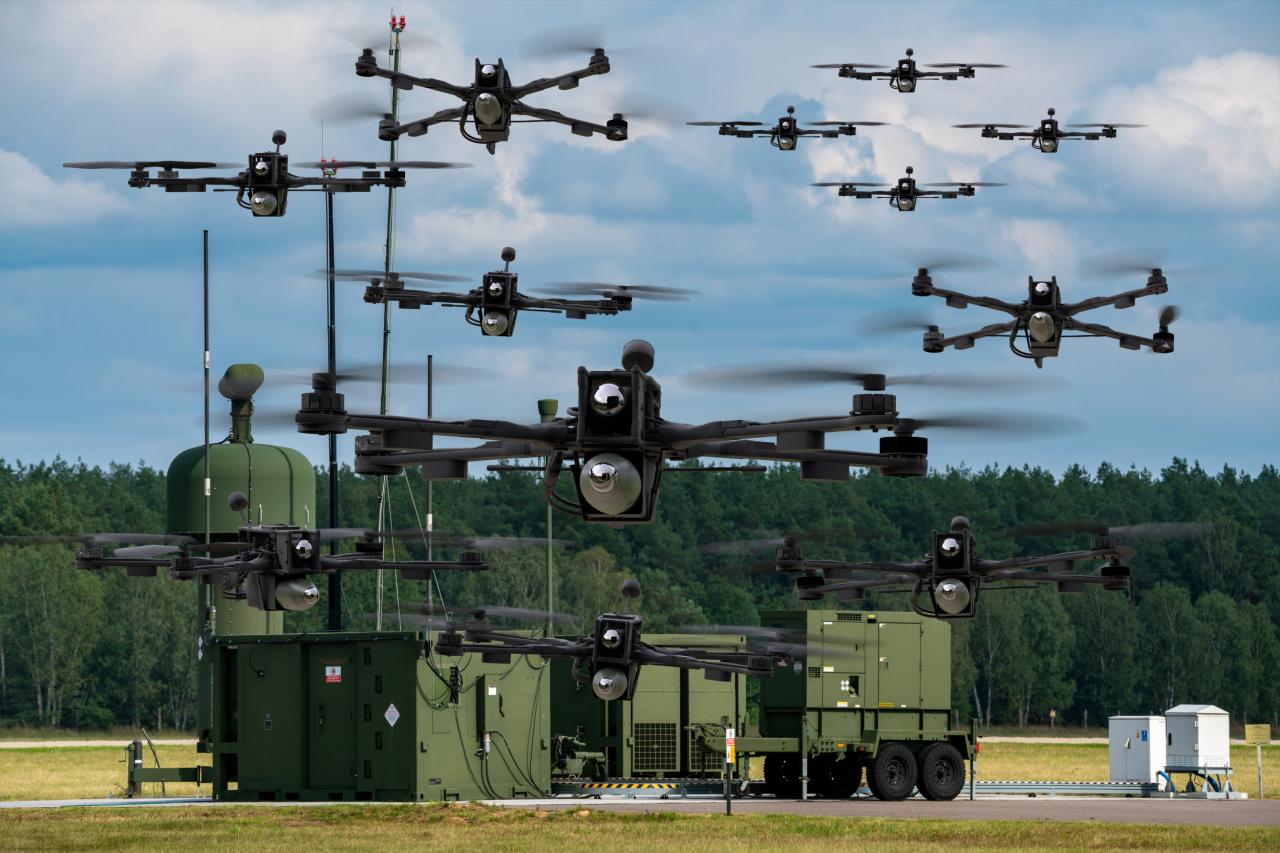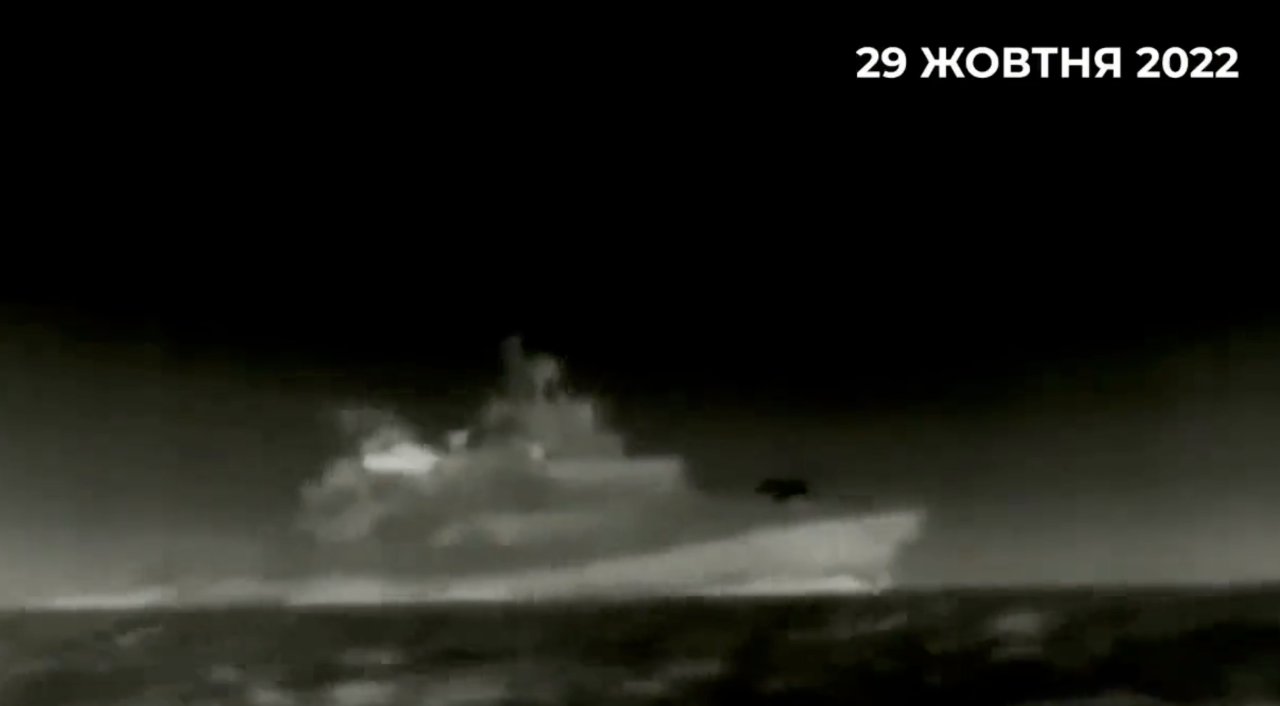Drone attack Russia is a rapidly evolving conflict playing out in the skies above. This isn’t just about military hardware; it’s a story of technological innovation, geopolitical maneuvering, and the changing face of warfare. We’ll explore the various types of drones used, the locations targeted, the actors involved, and the far-reaching consequences of this emerging form of conflict. Get ready for a detailed look at the complexities of this modern battlefield.
From the relatively simple quadcopters to more sophisticated, potentially autonomous systems, the drones used against Russia represent a significant shift in military tactics. We’ll examine their capabilities, limitations, and the technological advancements driving their development. We’ll also delve into the strategic implications of the locations targeted, analyzing the accessibility of various regions and the potential for future escalations.
Types of Drones Used in Attacks Against Russia
The increasing frequency of drone attacks against Russia reveals a diverse range of unmanned aerial vehicles (UAVs) being employed. These range from commercially available off-the-shelf models modified for military purposes to more sophisticated, purpose-built drones. Understanding the capabilities and limitations of each type is crucial for analyzing the effectiveness and potential future trajectory of these attacks.
Drone Types and Capabilities
Several types of drones have been observed in attacks against Russia. These include small, commercially available quadcopters modified to carry explosives, larger fixed-wing drones with greater range and payload capacity, and potentially even more advanced models with improved stealth capabilities. The effectiveness varies significantly based on factors such as range, payload capacity, navigation systems, and countermeasure resistance. Smaller drones are easier to procure and deploy but have limited range and payload, while larger drones offer greater capacity but are more difficult to conceal and operate.
- Small Quadcopters: Often modified with improvised explosive devices (IEDs), these are easily obtained and deployed but have short range and limited payload.
- Fixed-Wing Drones: These offer greater range and payload capacity, allowing for attacks on more distant targets. However, they are more complex to operate and more vulnerable to detection.
- Advanced UAVs: Reports suggest the potential use of more advanced drones with improved stealth, navigation, and payload delivery systems. These are likely more expensive and require more sophisticated operational capabilities.
Technological Advancements in Drone Warfare
The technology driving the evolution of drones used in these attacks is rapidly advancing. Improvements in battery technology, miniaturization of electronics, and advancements in artificial intelligence (AI) and autonomous navigation systems are contributing to the increasing sophistication and effectiveness of these attacks. These advancements allow for greater range, payload capacity, precision targeting, and enhanced survivability against countermeasures.
Geographic Locations of Drone Attacks
Drone attacks against Russia have targeted various regions, revealing patterns related to strategic importance, accessibility, and the capabilities of the attacking forces. Analyzing the geographical distribution provides insights into the motivations and operational capabilities of those conducting the attacks.
Geographic Distribution of Attacks
| Region | Date | Drone Type (if known) | Reported Damage |
|---|---|---|---|
| Bryansk Oblast | May 2023 | Unknown | Minor damage to infrastructure |
| Krasnodar Krai | August 2023 | Small quadcopter | Damage to oil depot |
| Moscow Oblast | May 2023 | Unknown | Damage to residential building |
| Belgorod Oblast | June 2023 | Fixed-wing drone | Damage to military facility |
Note: This is a simplified example, actual data would be more extensive.
Strategic Significance of Targeted Locations

The strategic significance of targeted locations varies, but often includes military installations, infrastructure crucial for the war effort, and symbolic targets. Attacks on oil depots, military bases, and transportation hubs aim to disrupt supply lines, weaken military capabilities, and undermine public morale. The choice of target reflects the goals and capabilities of the attacking entities.
Actors Involved in Drone Attacks: Drone Attack Russia
Attributing responsibility for drone attacks against Russia is complex, requiring careful analysis of available evidence. Several groups and entities are potential actors, each with different motives and capabilities.
Recent drone attacks on Russia have highlighted the growing use of unmanned aerial vehicles in modern warfare. The technology behind these attacks is constantly evolving, and understanding the civilian drone market is key; check out the range of models available from dji drone canada to see how advanced commercial drones have become. This civilian tech often underpins military developments, making the study of both sides crucial to understanding the future of drone warfare against Russia.
Potential Actors and Attribution
Several groups have been implicated in drone attacks against Russia, but definitive attribution remains challenging due to the clandestine nature of these operations. Analysis of drone technology, attack patterns, and associated claims of responsibility are crucial in attempting to identify the perpetrators. Ukraine has been widely implicated in many of the attacks, although this is not universally confirmed.
- Ukrainian forces: Widely reported as being involved in some attacks, leveraging commercially available drones modified for military use.
- Other potential actors: The possibility of other actors, including non-state groups, cannot be ruled out.
Impact and Consequences of Drone Attacks
The impact of drone attacks on Russia extends beyond immediate damage. These attacks have significant economic, political, and humanitarian consequences that ripple through various sectors.
Immediate and Long-Term Effects, Drone attack russia
Immediate effects include physical damage to infrastructure and military assets, casualties, and disruption of operations. Long-term consequences include economic losses due to damaged infrastructure, increased security costs, and potential damage to Russia’s image and international standing. The psychological impact on the Russian population and military cannot be overlooked.
Russia’s Response to Drone Attacks
Russia has implemented various measures to counter drone attacks, but their effectiveness remains a subject of ongoing debate. The evolving nature of the attacks requires continuous adaptation of defensive strategies.
Counter-Drone Measures and Effectiveness
Russia’s response includes deploying electronic warfare systems to jam drone signals, utilizing anti-aircraft weaponry, and enhancing air defenses. However, the effectiveness of these measures varies, and the attacks continue to occur, suggesting that Russia’s counter-drone capabilities are not fully effective in preventing all attacks.
International Implications of Drone Attacks
The use of drones in attacks raises significant international legal and ethical questions. The geopolitical ramifications extend beyond the immediate region, impacting global security dynamics.
International Legal and Ethical Considerations

The legality of drone attacks under international humanitarian law is a complex issue, particularly concerning the targeting of civilian infrastructure. The lack of clear international norms governing the use of drones in armed conflict contributes to the ambiguity surrounding their use. Ethical concerns arise from the potential for civilian casualties and the lack of transparency in the attribution of responsibility.
Technological Aspects of Drone Attacks
Understanding the technological components of a drone attack is crucial to assessing its effectiveness and potential for future escalation. This includes examining the systems that enable navigation, payload delivery, and communication.
Technological Components and Challenges
Drone attacks rely on several key technological components: GPS or inertial navigation systems for guidance, communication systems for control and data transmission, and payload delivery mechanisms. Operating drones effectively presents various challenges, including overcoming geographical obstacles, countering electronic warfare measures, and ensuring reliable communication in hostile environments.
Future Trends in Drone Warfare Against Russia
Predicting future trends in drone warfare against Russia requires considering technological advancements, evolving tactics, and the potential for escalation. The integration of AI and autonomous systems could significantly alter the nature of these attacks.
Recent drone attacks on Russia are raising serious questions about the future of warfare. It’s a complex situation, and understanding the technology involved is key; check out the various drone models available at Canadian Tire, like those listed on their website drone canadian tire , to get a sense of the accessibility of this technology. This civilian availability highlights the challenges in regulating drone use and preventing future attacks on Russia and elsewhere.
Future Trends and Projections
Future drone attacks against Russia may involve more sophisticated, autonomous systems capable of swarm attacks and advanced evasion tactics. The use of AI could enhance targeting accuracy and improve the survivability of drones. However, counter-drone technology is also likely to advance, leading to an arms race between offensive and defensive capabilities. A scenario of escalating drone warfare could involve larger, more destructive drones, possibly leading to wider conflicts.
End of Discussion

Drone attacks against Russia represent a significant turning point in modern warfare, forcing a reassessment of military strategies and raising complex international legal and ethical questions. The ongoing development of drone technology, coupled with the evolving responses from Russia and the international community, promises a future shaped by this new reality. Understanding the intricacies of these attacks is crucial for navigating the evolving geopolitical landscape.
Frequently Asked Questions
What are the common types of payloads used in these drone attacks?
Recent drone attacks on Russia are raising serious questions about escalating tensions. Were these attacks coordinated, and if so, how? It’s hard to say for sure, especially since even figuring out if chatgpt down? is affecting information gathering. The lack of reliable, real-time data makes assessing the full impact of these drone attacks incredibly difficult right now.
Payloads vary, ranging from explosives and incendiaries to reconnaissance equipment. The specific payload depends on the mission objective.
How effective are Russia’s counter-drone measures?
The effectiveness of Russia’s counter-drone measures is debated. While they have implemented various systems, the continued success of drone attacks suggests room for improvement.
What is the international legal status of these drone attacks?
The legal status is complex and highly debated. International law concerning the use of drones in armed conflict is still evolving and lacks clear consensus.
Are civilian casualties a significant concern?
Yes, the potential for civilian casualties is a serious concern, and investigations into specific incidents are often underway to assess the extent of collateral damage.
